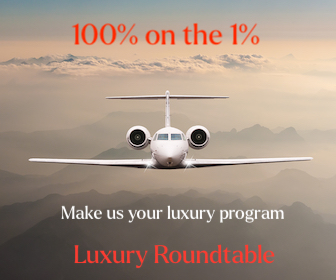There is no getting around this reality: the core customer base for luxury goods is not growing significantly, necessitating a strategic focus on top spenders to sustain revenue.
Luxury brands are now facing a critical balancing act between catering to the ultra-wealthy and attracting aspirational consumers – a challenge highlighted by Bain & Company's finding that the top 2 percent of customers account for approximately 40 percent of luxury sales globally.
"As wealth inequality widens, these brands must decide whether to expand their entry-level offerings to reach a broader audience or to focus more on their most exclusive, high-end products that appeal to their wealthiest clientele," said Sophie Coulon, managing director at VO2 Asia Pacific, the Shanghai, China-based arm of French tech and digital consultancy VO2 Group.
In this interview, Ms. Coulon, a French native, outlines the tension between catering to the wealthy versus aspirational luxury consumers, adapting to very important clients (VIC) and one-percenter’s desires, retaining the loyalty of the VICs and marketing that resonates with this audience.
Additionally, she also discusses the evolution of the HNW and UHNW’s shopping and buying behavior, targeting the one-percenters in China versus aspirational luxury consumers and whether China is still taking inspiration from the West.
Finally, she shares which brands are getting it right in China and how luxury marketers should prioritize in that country and elsewhere to gain market share as well as mind share.
Please read on :
 Sophie Coulon
Sophie Coulon
Luxury brands are straddling two worlds: one catering to the 1 percent at the tip of the pyramid, and the other enticing the aspirationals into the luxury embrace. How is that process going for most major and independent luxury brands?
Luxury brands are facing a critical balancing act between catering to the ultra-wealthy and attracting aspirational consumers, a challenge highlighted by Bain & Company's finding that the top 2 percent of customers account for approximately 40 percent of luxury sales globally.
As wealth inequality widens, these brands must decide whether to expand their entry-level offerings to reach a broader audience or to focus more on their most exclusive, high-end products that appeal to their wealthiest clientele.
This decision is complicated by the fact that the core customer base for luxury goods isn't growing significantly, necessitating a strategic focus on top spenders to sustain revenue.
Additionally, the emergence of the resale economy has altered the traditional dynamics of luxury consumption.
Luxury items can now be found on the secondary market soon after their initial sale, serving as a barometer for the effectiveness of luxury brands' pricing strategies.
The sustained high resale value of brands like Chanel and Hermès signifies a successful balance between maintaining exclusivity and accessibility.
In contrast, more trend-driven luxury brands that have increased their prices may face challenges if their products depreciate on the secondary market, suggesting a potential misalignment with consumer expectations and market realities.
The top 1 percent of luxury clients account for a sizable chunk of purchases. Even that clientele now seeks more experiences. How should luxury brands adapt?
In the ‘80s, Hermès introduced the Birkin Bag, and luxury consumers went shopping.
Today, securing a Birkin is more than just a purchase. It involves engaging in Hermès' unique purchase experience, highlighting a shift where luxury is defined not just by physical acquisitions but by a holistic experience that enhances one’s quality of life, well-being and social identity.
This shift towards experiential luxury underscores a growing desire for personalization, uniqueness and memorable engagements.
This is illustrated as luxury brands expand into areas such as travel, gastronomy and entertainment to meet these evolving consumer expectations.
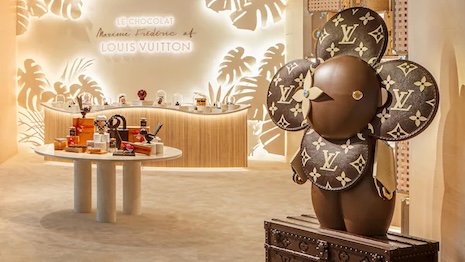 Le Chocolat Maxime Frédéric at Louis Vuitton, Singapore. Image: ©ARR, Louis Vuitton
Le Chocolat Maxime Frédéric at Louis Vuitton, Singapore. Image: ©ARR, Louis Vuitton
A prime example is the recent inauguration of a Louis Vuitton chocolate boutique by the French pastry chef Maxime Frederic at Marina Bay Sands, Singapore, earlier this year.
Similarly, in the post-COVID era in China, travel-themed initiatives like Dior’s pop-up at Lake Songhua Ski Resort, which combined retail with experiential elements like ice sculptures and a café, are gaining momentum.
These immersive spaces not only offer hospitality but also serve as a platform for storytelling, mirroring the brand’s legacy and values, thereby cultivating deeper emotional connections with consumers.
Moreover, integrating these experiential offerings with traditional product sales, such as providing customers with exclusive access to exhibitions, private sales or brand-centric events post-purchase, adds another layer to the luxury experience.
Yet, the journey doesn’t end here.
Echoing the sentiments of Franck LE MOAL, chief information officer of LVMH, "Luxury is a dream customers have to experience on every touchpoint."
This reflects the critical role of a seamless omnichannel experience.
Consequently, prioritizing clienteling strategies via channels like WhatsApp or WeChat, which focus on a customer-centric service approach, is imperative for luxury brands aiming to deliver a consistent and compelling brand narrative across all touchpoints.
The notion of VIC, or very important client, has taken root. How should luxury brands retain the loyalty of this audience even as they are time-starved and pulled in all directions?
The concept of the very important client (VIC) has become fundamental in the luxury industry.
To retain the loyalty of this time-constrained yet affluent audience, luxury brands must craft experiences that make them feel genuinely valued. This includes providing exclusive services and fostering personal connections.
Brands like Chanel, Dior and Louis Vuitton have responded by opening private salons and exclusive stores in key markets such as China.
These venues offer more than just privacy and exclusivity. They serve as intimate settings for special events, personalized shopping experiences and elite social gatherings, thus enhancing the VICs' sense of belonging and loyalty to the brand.
Similarly, Harrods has introduced a private members' club in Shanghai, featuring exclusive perks such as access to Gordon Ramsay's first restaurant in China, a selection of rare whiskies and private jet services, with membership fees starting at approximately 20,000 euros ($21,700).
What sort of marketing resonates with the top 1 percent?
Marketing to the top 1 percent requires focusing on personalized, exclusive experiences tailored to their unique preferences.
This involves more than just access to exclusive spaces. It extends to personalized invitations to special events, thoughtful gifts on important occasions and early access to product launches.
For example, a VIC shared on Little Red Book – China's equivalent to Instagram – how happy she was to have been invited by Chanel, along with other Asian VICs, to the Paris Opera Ballet Gala in Japan at the beginning of February.
Beyond these experiences, the top 1 percent values products that are durable, have a legacy, and come with a compelling story. This underscores the need for brands to prioritize high-quality materials, exceptional craftsmanship and cultural resonance in their offerings.
Moreover, sustainability and ethical practices are increasingly important to this audience, with a Times Media 2023 survey indicating that 70 percent of high-net-worth individuals (HNWIs) are willing to pay more for brands committed to these values.
An interesting case is the 'Hermès in the making' traveling exhibition, where the brand showcases its commitment to sustainable craftsmanship and allows visitors, including VIPs receiving exclusive preview, to meet the artisans, effectively aligning with the values of luxury, sustainability and ethics of the top 1 percent.
In your estimate, having observed this market over the years, how have the HNW and UHNW evolved in their shopping behavior and buying habits over the past few years? What do they like to buy?
There’s a lot to share there.
Beyond the previously discussed trends towards experiential shopping, sustainability and ethics, a noteworthy shift is the growing interest in online luxury shopping, particularly among the youngsters.
The Forbes Research 2023 High Net Worth Survey highlights this trend, revealing that the wealthiest buyers are at the forefront of luxury ecommerce, with Tmall Luxury Pavilion indicating that Chinese very important customers (VICs) represent about half of these online transactions, marking them as the fastest-growing consumer group.
In terms of product preferences, luxury jewelry stands out as a key area of interest.
Bain & Company's analysis mentions that the luxury jewelry market experienced a growth of 5 percent to 6 percent in 2023, reaching an estimated €29 billion.
High jewelry, known for its customization potential and value retention, is particularly sought after amidst economic uncertainties.
Focusing on the Chinese market, the Hurun Research Institute's findings reveal generational differences in spending patterns within the HNW and UHNW segments.
Younger individuals under 30 years old are more inclined towards personal luxury expenditures, while older individuals prioritize investments in real estate, healthcare, and education for their children.
China has long been the driver of growth for luxury. Post-pandemic, who is driving luxury sales more, the 1 percent or the aspirationals?
In the post-pandemic landscape, the luxury market in China has seen a notable shift, with very important clients (VICs) becoming increasingly central to driving sales.
According to insights from Bain & Company, China's luxury market witnessed remarkable growth between 2019 and 2021, doubling in size before facing a downturn in 2022 due to stringent zero-COVID policies.
This period marked the first major decline in luxury sales in five years, with nearly every category and brand affected.
The economic slowdown, coupled with a decline in consumer sentiment due to factors such as the real estate market downturn, higher unemployment and COVID-related anxieties, disproportionately impacted entry-level luxury consumers.
In contrast, high-net-worth individuals (HNWIs) were less affected, resulting in luxury brands that cater to this affluent demographic performing relatively better.
As China's economy continues to navigate challenges, the importance of HNWIs in sustaining luxury consumption is expected to grow even further.
The focus of luxury brands is increasingly shifting towards these very important customers, who are set to propel market growth in the forthcoming years.
By the end of 2022, China was ranked third globally in terms of HNWI population, with approximately 780,000 individuals possessing investable assets exceeding $1 million.
Notably, 56 percent of these affluent consumers plan to increase their expenditure on personal luxury goods over the next three years, according to The Hurun Research Institute, underscoring the critical role they play in the luxury market's resilience.
Chinese luxury customers have grown more sophisticated over the years and, perhaps, are even the most digitally savvy. Are they still looking to the West for inspiration?
Rather than looking at the West, today's Chinese consumers are showing a marked preference for brands that resonate with China's traditions, societal norms and contemporary status.
This inclination towards 'guo chao,' or the national trend, underscores the importance for brands to cultivate a nuanced understanding of Chinese customers' behaviors and aspirations.
These consumers are increasingly drawn to high-quality, authentic products and experiences that mirror their personal values and cultural heritage.
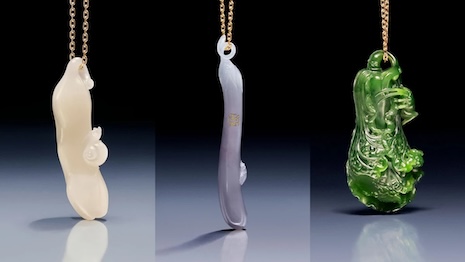 Loewe's Lunar New Year Capsule Collection for 2024. Image: Loewe
Loewe's Lunar New Year Capsule Collection for 2024. Image: Loewe
In that perspective, Loewe's Lunar New Year Capsule Collection, created in collaboration with three Chinese jade carvers, particularly stands out in my eyes this year.
The collection's homage to the Year of the Dragon goes beyond conventional zodiac representations, celebrating the art of traditional Chinese jade carving. This art form, known for its associations with purity, wisdom and prosperity, reflects the core values of the Spring Festival.
From a digital standpoint, the tech-savviness of Chinese consumers, along with China's unique digital ecosystem, necessitates a strategic approach to digital platforms. WeChat, in particular, stands out as an essential platform for delivering personalized services to customers.
Leveraging such platforms effectively is crucial to match the expectations of the local market.
Which brands are getting it right in China when it comes to targeting the country’s high-end clients? You have highlighted Louis Vuitton in the past.
Understanding the preferences of China's high-end clientele is crucial, as they prioritize a blend of quality, well-being and social responsibility in their luxury engagements.
I think that Louis Vuitton stands out by providing culturally rich, experience-focused offerings that cater to these values, moving beyond mere retail to create a holistic luxury lifestyle for its very important clients (VIC) in China.
Louis Vuitton's strategy in China is exemplified by its exclusive spaces, such as the century-old mansion in Shanghai's Zhang Garden, which is more a lifestyle sanctuary than a store. Their top clients can enjoy tailored experiences like afternoon tea, exhibitions, encounters with artisans and private gatherings, including interactions with celebrities like Pharrell Williams last December.
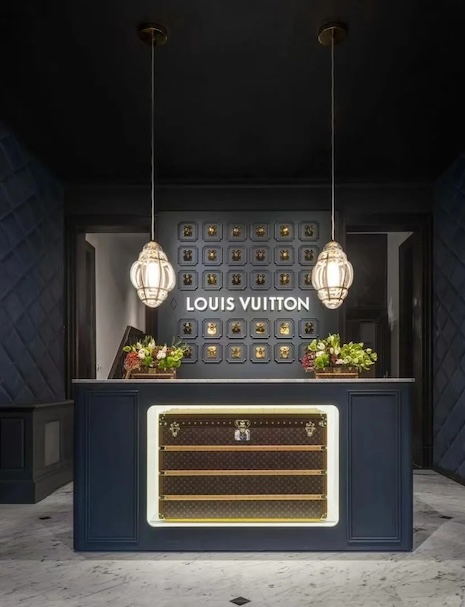 Louis Vuitton store in Zhang Garden. Image copyright Chaoyi Buer
Louis Vuitton store in Zhang Garden. Image copyright Chaoyi Buer
This approach extends beyond Shanghai, with exclusive VIC events across China, such as a rare leather goods exhibition in Guangzhou last March or “LV by the Pool” lifestyle events in Xiamen last summer, emphasizing the brand's commitment to personalizing luxury experiences.
In early 2024, Louis Vuitton expanded its lifestyle offerings at Zhang Garden by launching an experience centered around its trunks and travel home collection. This included an afternoon tea, a bar and a VR experience, bookable through their WeChat mini-program, with very limited availability, further enhancing the brand's desirability.
Digital engagement complements these physical experiences, particularly through WeChat mini-programs. These platforms extend the brand's reach by fostering a stronger bond with the maison’s top clients through educational content, exclusive product offerings and personalized services like one-on-one livestreaming sessions.
This integrated digital strategy enriches Louis Vuitton's holistic luxury ecosystem for its clients in China, seamlessly connecting the physical and virtual dimensions of luxury engagement.
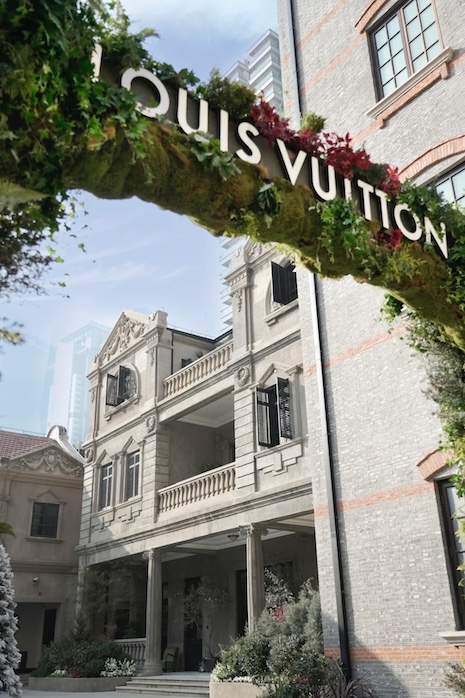 Louis Vuitton store in Zhang Garden. Image copyright Chaoyi Buer
Louis Vuitton store in Zhang Garden. Image copyright Chaoyi Buer
How should luxury brands prioritize in 2024 if they want to increase their market share and mindshare in China and other markets?
To increase their market share and mindshare in China and other markets, I believe that luxury brands need to deeply understand their clients' needs and preferences through thorough analysis of client data and analytical insights.
This involves not only detecting personalization opportunities but also designing privacy plans that respect the customer's private sphere, ensuring compliance with local regulations such as the China Personal Information Protection Law (PIPL).
This compliance is essential for CRM systems in terms of data collection, storage, processing and transfer.
At my agency, VO2 Asia Pacific, we've been working on this critical aspect, especially with the introduction of the Salesforce on Alibaba Cloud (SFoA) program in China last November.
The partnership with Alibaba Cloud allows Salesforce, the global leader in CRM, to provide businesses in China with a CRM solution that is fully localized and complies with local data privacy and security laws.
Leveraging SFoA provides a robust foundation, enabling luxury brands to tap into the full potential of WeCom Clienteling and offering enhanced customer interactions and personalized experiences.
To further increase their presence, luxury brands should also focus on crafting culturally resonant experiences that showcase a deep understanding of the culture and meet the desires of luxury clients for experiences that transcend pure product transactions.
These experiences should foster an emotional connection and narrate a story worth sharing, encompassing both digital and physical realms.
For example, in November 2022, Louis Vuitton marked a significant milestone by opening its first restaurant in China, The Hall by Louis Vuitton, situated in Chengdu.
The restaurant, hosting visiting international Michelin-star chefs, presents an array of exceptional culinary experiences.
Additionally, the maison launched an interactive WeChat Mini Program, "Mah Jump," for the event, which integrates local cultural elements, such as Sichuan's famous hot pot, the vibrant nightlife and traditional tea culture, paired with a hip-hop song by local rapper Ma Siwei, engaging the Gen Z audience with a blend of tradition and modernity.
{"ct":"k5oq08DYpjh7+z4lE+6eu1ez99Q5jNYBieen9nLeqI63UM4YHQvL4kXs2nNb6px9O3JxfYONxcW8NU3dx8Pdu3v96NmsvsLcnLDhXP\/AoB2eUSbS0wvnzOH9BL3A7AoWGf4JtIyA2IJa\/OtwyfItRMve4mBeURNS61qTdkZ4P37Ylo86TLeF4c1Kp2t7wh9qcNVjQ7FAiRE4TT7gdFoL+wvnfvv+yJ3goGcaVYmR+N+UgFfwlctYmBosP\/jcd1TsplFU+P1lbxVfjpNmFaXmJez7UIOhPg0GdBGiI2GjIdKOG7E7Q1QPdxuJxg19WWGm+qoZEmKuotxlzzKEf+dKXBLvV\/XlMIG0vZDpmz9YLARm3J9MDUsbGOXqQ99aLwE9XWnHeoXFLNmHZ84sFUoCVdjwBjBAnBxVPn1xd3WiCkcFAMpthv4zJa36qzXuSsT9HTU2iz7D8d9wAJhIzku88gSSWKgimTz11jWCsz6PLC\/M2lXiPauamEkKwjU9zNho5PxiQOJmhMFO5g3ks4DuMwuWNv58yeIU0XmIt4+NA0pY+8eR5yPYN9\/RTLRMZuhqszcAeSpGgPkyweB\/yfTWRiTIkwCRFIzZ5Yd+AqN6CFpSZSQbas4O3T1JvcE5y\/BwIjnm9RRIDnDWVevjqsIg4sSFuKH7ZSxJBnc44BMmy0v9cHT6iDU4qWnXzBep3gHcsj399+a1HxQVFu7Yv4capqx3K7XyfK1\/5CaHzZ887Ejq1kEFAmobFL0Tnzk6Y\/Taz1yDJzuskvcE7AWZYlxX8Mc87aW3qHgAJc07c+tlD+LWuGm06iGaOBD499nySGjpRIDBkYQRA5aDYZCLZXvqy1vluWBWQybifSKwE7COP1gYzgWE82wHILWt4JjoTgkmv66AQZYQI0LCXw+knF25B5Iw5actNL9t9HOnHO0KTcowkj\/BAszezu0SFARFZ6yuip9hV43rjgSwtwHL3VqwewawQuEJSjpNgG2GhxbICNK+ejMBdhUs2ea2PNKDJlJ2ywlDeDBy29fncGTnOlWsue9B9PzKkgrHL6xIj+5djlInakgZxSV9vPOwvUCpePZDl9HbfacxzstJRKDJHs2xT635RYmvYi4FxwKvgnegjhqp7yZdYGoIjlBV8GyyiUn+qCLoxOfU\/bCgqdn2lYK7mbYJhCFidJqZCAeYWpA5DmZs3NMBb0ecVOZ21UaGzC9AQevK\/TaLL1NtIwPZZLL57cNRaeRwAi0v5C4EFoqnodpJciteUgBV3hBj\/2ToUplxfO5LtyTcY9cRL+v3gh7TRUwZAGsdMHQ7lc6fTcu3oubZnGt3S74KdFsSXBAyPRUitjF53fk6xVIJxCHkQ4dPWaY0xQARqpLXSHXGvIHiI6C1nY++OYaMkzOvSRZRY0xAJmCrCDWuIUW2rY4avR3VJHrUw9Z0CerVr8CMEXIV1UW6dTiRSjLrJc0o6OH8E58\/0MUnd5ZfrFi6APhOC7\/R0PiK+afik1L6Vkp4JVcL\/KkKUKm+db2oy6UmagxUNXy0ufNKrXx1sMOClTmbWz6ln6bj0DYgsEI\/2r+u146PZzYtXhXJ6elTTxBdURIJ8voFD4dhD1yBBuGwJ8P2GJ84sUpDo7jMG6fL30+v3qVO5ldu\/UqtQC91nJq3yYWS9IY+WpP8WyOlKNLShGzJf5DvWfqas0BeeNr5OSWYTTcQL50T+PiCSvePHtu+vKou32pOhXYFDf61j8hsFMxTkq\/UFsbVQsTwGrE00ZiFC+qlKVD153uqHg8u6d3dV7LxlALhCkXZTK7KT3fKV5UIzWH4fnZQDkG1UPSxejjRppX\/XiMes4GG\/G0lIH2zQEWcRJyJp6Hr2Qq7vCtzv3736X1evJgWvw1RflT9yJ\/sTrprCNzeVDVOy9Vu8Kgw7ziS5R7olmuosTvEXyNUxThGp55utz0RjSFwohXE8jEeUvB5vKS6RH7SqoNRQmaOdCZpfEFcWtqIXniba\/JMUO8JRQJB7ghU5FEVMV7zxEyzyx+NZukLF8XwufDmbJUkizXzKmzuNBIriYIJBbudilhmFQJXEriaRQ7YuYB2VbPlxAm0wg+EMaaAASKssCXZWHMP8G26r2KZVBdtN4XYsDjE5jlfNQ5B1\/9r9QTMbh59UaEr0xtLJZ6tTIO5T\/Fy0AO\/tvXIr7OXxqaFcBVWUb+OcIbJG\/lyMNQGeRXutE6qNv2O7+PPVKYCKmgETMJv6ssxyg+oVNp4c+9SsVJP1kW5TMGSfyxwM4EnpnkyGYGjZ6TBagOtKA1ix7FqKoRSaotIXDECCDu2B4oJ2qjQLiS\/FLi6mkCcjbuXXQ3fs0OYEDMrvgL8Cxabjh2ZBDRhD8K3+\/mbwB\/jQJkYBkItx\/4NabXnMfchUn+hiDa+jeD3YkN6zXqxqeIqp05Kyopg5vqX3tFQvF8h4xWbG84VHWRfeK76p9fRihGkLvom5kaKRBiUgj7rh5MXdYh0\/8a52ijqKUTjiLnXNaDLvKdqmN+eC1ivRP7yjwWewMc2s248kX7fh9BEh+hy+ZmzriJ67ZJ7Yybh23s+7UpZDR+YoqC0QCvXsT4xONfB\/YBDBCQypnBUHh0L0OvJNiuj19E09c5daJMyAciBRlXSfHHMARkoPGhjhYMd+L3loXxFDOKqBbNpzm6sJ1lFvKkxuSmZukczi9XdDzmmh1iICoB3lSARiS1TBicYQpA7+DT9eJ8zyvbEc8erfAGVTDkM6xqrnpu8pIPJB1Oc3MX8\/\/G8YxcJqjs2Dy4c2r08UniTGOvwJd1SqvFrk6J09EovHHMbs\/tNVQnDfKiZsqMRAJEV81uhTGIvgTkx61BVMiiv2uWt6sqDYUx6TRZlUuRZJ2TuiD0QwGllWryaZYOoYBB5enDrfAmZYpa8mCzU6PWyE8rA7k54\/IvVddP8SPtuYDmN6G6MvLg7zw4Fus50wFBw37s4T0ViAMqS0dIgjckLW2kTqM\/RalbydaEqI7XQxdIk2W2bK7NgHVkN3+MbiPzYUQarIg\/Gdan9FiCDpgHXFEZACuWeYKkP52x+GWCNR9Tf4k7VmR8zqeMYEb7k2yHqtHTsUZ75\/+bkonQ7x89keOI9Ep2AIf73JaooCvRSAt64dPCte72ogxTZQEaOAW6q9O\/YLqUAl5wAC0q8rqiSEsci0PGtromCu0KuHjoMaBEuq1dInYQ6DzmMr0higOBzCVIZoqhfnnXFP0u7\/UxnczMXI9bljw6B0M6X\/v4waWaW8NgT1rha1wlJM1jVOHoM0dV7dBpvl+Wd2npnL1z9uXlvxmpJyU\/6bzLod1gR5JX8P2XNBmVboffqS++K0Y3ccdk04XJLyV+Bx0h5Eu20fjshu6dxxIiGmtGqSi5QYCqIvr22iywggwouH9R53HTKB+Qny6jK9UQBHglmZUA9s+RIth7jSeMlNG9LhQjPU6XD5V0Tm7Se0ioSYcqKRUyKEPwbp+VNtLIqakWR7wAV3sEUl6uqCF1Uzvh7VpNWiJFNmkETLo\/sLxsiN7u\/9OqgoDkniHUhzC4o6Bbu7K9R0Et\/UOYUGvwchv\/Pa9gFnuSPqbJizqfH7BSyBuWJmNeorvhmL\/vHiBFT7wtfwIlORqMnxG4+ecrq3aJRMdKQRo\/bg4BkC7sx8++gVxpkvcNI4+ngPyn5C0q56Np\/Bd11M7XeHrKlbYy+jVUyN99rOe75C0bk006eVhEyI1a\/ZQUfQavAQMHCar5+ezq4CRfAx+x+tXYJbK9UOk5Lc+KEjTvQ4fUcXBfLDIBCLPpunpOEgf5iN70ay0UT0HrJvByiDDUDujn0nyYHKNxFinFkFtzYJMFZpFb\/NI6C9Pc8MM+s4cNgtmRgTQIHdH7GPsfYjBq\/bgs\/BlAGj8pdsdcWAxNIzNm9QInQYJnEI9guQyVjveeY3hj4c1dJN\/jF9Y1GKos+uKy7gmrBEP\/zdW5Qol\/nRGSICPJvw27ZINsSSsn4ix+iqaK8qgPfoLKX2uQcYjW9gY\/jxUL+Trpo1LT9vSc\/JBMKv6cAnVVOyo+ATVt5yyUNs+R+q9woArGAsvtYrcFEUpioHd0jCbWPt2DkQtLMdHRsmGW5+SqSEBrhcsa5vg8MTNcPkvi4PGBz5nLzdvQBXj0FUeF33PFSK0pQA13mvVD\/PfLQL6aFOz+UIP2KoUU3N0Q18nmZSJevCrL\/vUPE\/IRSqCPKc28fVOzcnjeLgvWjuo4h9c6u\/sNyqEBy0OSnrdTRA12\/LzdXBcGRO6qVGlBMYBwyI4F6AhcSA36Btw+4ELXTnlyIR8blQKV02KlF9ex1j4ktwrIJH53odi8CKOSABqS2J2w6g2z8SGTDg1bGjHML53kN30VIAemmlYlP\/mLUm21S1c28DP0y3VofuMlR5Qjg7OnDdoZ3Dze3thXeyMJbcXgj0a10KS2udWCbkoX3TM05+OghAQ3URD41+PvlvW0U19q0bKkvQgpn60fc0MQE7GFfZm0U8H2Rn+YKKg2lwDB8xQqoaWgi8pmNlCVUT5gZN3hi5viUl94Dxx2LVWBgvgisuvtsBt0b42nRdAf7CkKMoUN11NDLKoiLpqwZnRTQHnKCTMATR0cCmKf6Etgst9AeGMDuUkrTrjEHjBqzdI5PQdXBh1BK0AoRl5bUTNaivd3\/23swBm8x1gjCeEQdoAUvT3YPDbKXlYM7TnjGD3blMx\/w8uLWlYpM2aOmXMBzDtR2x1nCWcsOVMb7gB5DMZ5avozf+0UiD9mum7s7qaq03W9arvYDG4hb7Xc9zZp0gPRPznNG3CJkpVGO067PwkqhPzPIyqgNGii+qnxv\/z2\/ExX+KNxyy7m2Zoksl9kwlHzsASz5YYq8TabY4iMFU+oQSQNyOP3TeFYnLfP5pJ\/vQuFh+diu+jGBbY+srSPQw2+6dA+GyvmjtXpD6wv7hT5pTINDpiXNe14gjbAMdmAcOTzxnIF5JcXoPu5SwkyzyrmDkpthjH2JA3zg\/DmgurotMRguhmYwvKSvkSRwox\/tw4nEIxQBPoyvAJq214OuYOm8\/TuVnNsJiE+zSDsNiR2U8luvTCVBDb7hMplsShL8e9tlfsUVX0\/fYe8Bdj8S22YUXBRkMGIsumpoBXA0RWtGP5NU+lIciZoXlIsB2nh421ss6H44+9NoYYRdWDmxLDSjUM\/TzHvmTAxoL30WLxb9qEpNLmCNmjhUCKiRbSMox8vyKJ\/t61ijuXHDBj49ov5CyvUfySOQ0GJn0wvaNiUOYXKSwH7M9Ppo6XHpaT5xQHJsne5CDorzZ7g\/oZSr8k9+A2DUbwS9XGCQiJmlyniKJMtaV2E\/NylV+9EmxTMI1pkIOjuaBJOUwy2pJvGigbOe9s4GBp+07RaN7GWYg3V+6l2HMiVYnUb4CUQm0WCaRXT2SDmV9mtEZZbPBilquD8VOzb\/EbvUT9ZpRIDHvY2YsHOSq1sTHKyHIuL5aY\/ECSOcqNhGwjgBHP+6DWn\/PqPezH5HOU5wf7Uy\/qIEN3YlB3y26Q2I0DreS2xxPZG93s\/Mg0BZMpsru2RDUpfntxjBOBqrK4gKmFmQvAL7YK24P\/B9neJei01ad3ySDO48aUdIqoQwwIS4+38LOMGcyVH+DpBJM+JhIM9AndQsDASunaCcuOXS0XL+ki5freXLy7LZURV8lYr4BJMR7YqwDBCEE1iYcLJhjyW8KrmQyrDLirQLBLQpYPSPDVyXEeCV4CtEBMggj+k8799seWd4EuFrkg29g\/lqo4b3d7wfGZjShtPebK+gfl9\/2jTyliaYMow7BFAdQ1op5gxogooBt7iRco6dHBz1qPF7Ji\/9s7e2fjMWiNS\/GTcKSNHK3O4xEaQ7IDnSFI+sPlvtdCSjpE0Mod9bgbGeMtAcLPoA3dK2paztBBxxhyjb8SqLlDdIihLiGnufR+2yQ51nyP6uZ\/YoShFEoFTu55fKlmTaIwLJHy3pQfma2givwIwL5EcDmp44YBzJ6XoeLJsD12DOpunBpaUgq09SvkUCxTrblO01ML+Z2pxaB5QPUEAkgwYt5fa5jAMI64vfqsIB06rmfwPQxxr0ZufIMwJLgsLf1RI6OM7fHqR8rxl4c9hNif4vN64YBRChppYxE4wHD9lzP5NQr9cNOoegrQi8a\/KZOFRd7qtufeXnh+4XmEj+A4EgZHskdngkszbI\/OXTfep5JkFGhCbutyvMARdqjt7lUG0KQe\/OizV\/VSVXhaMjlM6uwW5HallJ8sVsFbIO8foajGJTVniZruPLabrzq3FyDtfgqdq11KpwBn79QyJVtsho0RHLfUZL5MPr2DlIj3eh7Gmope0bkgK40zfuHpsXqgWwj00TWHxyJAq+1PTaCr9Sp16EYFPSsrkcLRZiUodQbJHUE78D26X3ynKQbfGG8MMmuBIBIHw1ympjcwC0Px7oMXZvnkU9GVMSH4NAhC8FmHXUwT+6NZDalIwECNIX+T0dBnDpVsp+si7vOGc5ejj1LQMc3W9u7NGJBmCvEwf3Jc4pQmQRxczbIssVrVxuUNJyDtIyKaaY8zZApIFGjwBrdkU7JcJNvFytrkGTLKLtD3tURBEWS3vYsPUdlM2B69dZCgGmGMyYwOePTyWdjVOuB5+6TBO8EwEyRcoJojy89ldXtYh5ohwH8fpBVHZLZKszDW8xfrlAP6yFP351WnhHq0dSfIOlwoO8pWGUGGTSvs5zodIqq+Gzs\/dnMZeWUcmYOwT5ax0XUO1e4aV6Rpswvkq3SfTHaSnT8cDSix9ssqsIVscgR+6oauspli03OyFk8oK+Ksv9V36i+qrt8D\/aN+0NN8KPRj1wUcj+H2LzF9nUQlNyqp5m1Zlec4sGTDpEJuwdBbxw\/FTfJZaei6hbBy8OMmjsFhq+m080qD\/wqjhsIxGjb4H7rrgbaUWNkD+TeStFP710eSbtYvLBl2BMGejvCJC6Z7b\/wYg7y5pkLa1av6fEFDqmt5lC\/wQ\/52ZgHgdaToV3W4gb4O++\/+BA9n7j1zMg2Q4ERvRI0Z\/uMsW8xFMFiwTot+7zkxYbN8IsmCEVJvdPFti7taymPr8SKob9jjRgibJXFLap05Do+\/GeEBj7A08W2JijXKZnPsXsz2iq3Rzi7qS+SC0gePyAfooSHt6GWwNhxKQCdYGNcWl4priJMGq2yvECoELam\/c\/6qiF18All4o2lz6dtyVFe+xZtHeKRQIf4F9PhjEmjFDEjvI5fcCyAlXFKLrJVbiz9R5LlIcRpddU0JNas8dZ8mqOXD+VtnrGQmJxYK0FOJdaBwvSPZOdtADO285\/QI0US3vKibkNPDG4m1SiZj5MFKO+5JV3wbtMFv8EcgOeIPk91Mv2aaSNYZ\/mUJwVGvF8ALR6njBJBwAetkC6f6wz9OvlYEwTKs4Eyyj+EHDW\/ou2GGUAthC6XYZdf4jG7xMjRKD++Eq7kSQOOQR2jrZZJQb1lcEgLStrQcbiJmxcep9+qP6N+GcgGVcrJnBECQ+eH9B8a\/MXFGbDhAH+VEKWXzGjLD3t1yx5Yo\/MEq3UGiTwgq\/g2d8DX7Od1BWS7I+a0ZNiEzVjsg2E5NY+kwXCvYr\/cqHUsPS2k28+CImzx5TNhkyLxBjyMJrNLEfl5lZLRjUNpChrQ9Zqx8epI2JhDnmNa+iBVqP7BLUz4Ce43+Ggy4C8yy6QvuJ+9xoGfzQPkZtf5mxkhAY0Vc0zePT96jkFz0Njx8ArfueqBf5t8TkF+J8snBdMVN1nc+fB\/krhqoAi7xt4QNVdcF5n\/dNipCI2g1gegbA7HUzddwN6qlcUK\/hG+HbeAqTKR9QkskdIvT+ow\/vsh3NwIJeZrq\/Ki8HMgkXjoEzWRXeqF\/3wBOX+4J\/ZFSVGrK2ugsdIB7OWlLiS+ANldl+6n09qVie9bO5\/VbBau1E4S30K84t4bQUgSI6VeZN0XmwJpBrBZFxuFPRz8xFWCLMyTrDTD4D\/30Ba7wxbpckKIbozM7Tj85IW3lFfsrW9WBe9cOqXxS\/Nrs0XhzJSxZ3suUl4CfE8XdBh87ReO083h9MOjau9rmjiE3YNFAj7OEOu1YnSq5LkWk3cS2oZwDIkSebGG8ZSuuhf9wHpZAvJWubndB\/s0fXKCSgfc2btvccTrdTVRvBqq7hMcvvBsjl+kQJVg9CPOzDdyeegKbFH1JqfTaqdlQ9ByTEoU87uge5oYZkcHBytGa07hCRciwWTSlVwt50rZYF4TJ5eLrvUMOJgfx5cdDb8uZJoE2NM1GO6VvrgCfvjSZK3p4CAaMkIDiV7qjh0O8MwRYSiHVQ+ob\/gyf3f9aYkdS5br3DR8mo7fJjl\/0EUcjec4evK5qw1dCY5s5JmwI+znEd1ZOr7wPx+ZMQN4Mw\/YMXcx8hgg1Bz4cH6tSWHb42BZASKpGiJUSfIDKAxKnNfzYMPpXIZh7YaSIEmHHrd6+qqG1g25T5H0Y3I0OIbwXKvmV4pasM5Kn8M77sCyYGloZn6otDQnpJeEN75WlJFjTRBve1s2t2rsVZcVFMAbjTJKx8z1vt5VasrnUpKX53bs46G5noGB8M\/HQris8vcAwUu1RErmzH66kTyJgUGbGGIC3loqR2Xs8R+WEFjA0eQSkUwXB8g6xQ\/p7Au\/Icl6ReueqFYN0ldMOsIrNo9jkPY9YWy2EaPXTkfm5iRUGbp6HCLWera6sZ\/YzeMlagaGImBr6l+H+SvmMhsGVX2NECC4APe4fiXNpgyUf936iUcf+emdMQGpZH10zPwfxiG1nTkr7QufpyuD9PN0aTKaVZI93muU48Nuw8CmX+j3Q4BZdgir4wRuLCz+EEJNJZatYAGOvWif2XCqjesNOX1\/0acqGfVf5jOMglpbkfmMcSwWoYATadWZjddkp+F\/J4yWrO+SXJAqtvWF\/XxkP7ZV51zQi5\/B0bnPPVQKKsocLn+K4WEO8EIIjx0yHXR3rh\/nMcRLM+ud+EsKrs2GZtgubo1qeiuBR9vckTd57DlK1jKIEF6\/qvFZmZQjybfC6j53tMAkkum7rJn89Q+RogTxEZFdzlS+4rWq8peaUSZogfqwCMYmctrv1s3MjepmQHtwWejwbL\/5Tc8Mj1Vt+Zkl8ifW1koiXAzWUmexfa6n6xmdo+HYFSIlCMXSeNuRoxVQVFyUAuAounQkd5e1bcQu3qnD91GydCXHSa40sBNG2oMYEGG+Hs25WbgAxMiOPpwgdsGoUMAPVkbjpNU0lkVeAlkJhaZCbMWblOw6N8rW9d0vJvUG9Pp65PZm9DXzLNZicL5pttRz\/+NSJ63Hhrlwn6wu9hEjazEGcV8EMaXRe8SyOdy2DHniL5e7sbJP7K1RwNhT42vjsChPsoLZBPe\/Lups0ykGEcpt6q0F\/xXPB52svkek\/bbty1ExKcCVz4WpOlhVlhEToGioZ47dTIJi+uZUK6QVpj4SAYaWsgjDHIQcRoWenoqnXtX8FamuxtknevWcUYi8avXliwE+jcMgUo2jGzmtawY2reVHVItUniwC1sATGcKon6CD9HXurcYCp32Iyewyl3o285XnHF7IbUUiDuUhJXKmvKF62zycgIfj0b1s6CkWpfbI17fazqflpeVwVh1f4nEMjKNeYUT7TdFfiiT3h7v0mp1Gq7sR0KP8diKUuwvfE8k7EmTG4a3CkwA10iFdMbbCWeuXSjlwwIXJaHW98HQtJiYDo1YBQcnG3crTpc11PdnriWR8UxFwuSekiAIuu9z2+Uc1c\/tZtXph0VsCyRnROZWfQJ7qNh\/4qHLkCJp03pOtEwuZnHC8UumKyVaLwn4iVh62tmTekqERxK+SzVF+uXJGATus8LWfsLW472qgpwTMMmrjgRLB0xTDk0GYAjV7nQoH1GGOG3wB28x35qFucp1gP6fkzvlvtMsgPfVNTQ2ce95HRwdUmtI9yVN9KJ30N5U4pUdDQpg6OkThRQzbRAKv6rMgFJhzmFx5Tv2bm67OTqWmhNugmZp+tb8Ekw7AgJEhmKWpmFbdtJi+J\/GaX+MqkSF1v6n7SzB4c5OHTKOu\/5K8iZkmqFpEeJ9r+MJ3f4gw3\/pCrMEHeKzbx+l4F24W8SYw3k87SpMdp+l1oLXlaV0+YrJolJ6Ox+0di+zMzJhTjQVsU9jL8EkYGDRRZTyeMTWawWfX8kw7tkwgLfayFVdZxaqFgaS1UNpNT6DbmrRZwaUMIkx\/HtXdaqHpTsI3nLOf3hhuXqt52zkVW9KPcrqtVqRKdXXuVtAutAP\/D2VJaluPSG9hIgwmYDyXo9BlNenyDfQU\/gBTSxrpsMzgR3OCb4CcAoqWJlOSW2HGbo0r0ysGe6JjEd4aH1WpAs0e1xweMRv\/po7v68qeMy03oOAmC9DF4ZXpIAmzv22xIPEUtXX8IR2lUBkJS+9NMGzI18P8koWzZ4S4cpcKR2LU\/57F5p+FakE2SRUe+9MI+UWAlqHJnTHyHhuHXiBNQZI9jkfvCJo4rSxyTp\/t9bSscY6Z9ceN64pL31rtTbZ75HXTLZwRhwKP+GAAQ1sbh7gb40XYzNW1d79iH54Mucg8ORIHWGsQJMBltD+tymfTYuwsun+HkzpXaLYNFuSHd\/A+VuBFaJekA78YM5RyjzT9fWLGAjaswfBFaoD0WJTv71UK\/2YE9IbDHMwha5TNoHZCryJoq4XQ8tmtQZgZ37pM\/NcegYaWNgk2mZdYlBC9oSNQRsHPYFNw+EhFRT9qPIHk6EyE+TGUsIl4foxd5DuyaE\/ob7lPEC9m\/qCyQsEWcofs2MyRiw3PE6fiEClRUxNKQCwhTP5TA4PV21YRo50QNPf+ZaUFJhvr38cnxypLACyCcskNEdBknY44zgt9pYMEVRe4Oz+xt6FApKZh5PLnttoAN00dhMV9OpM33fF9nSBngboY+Ax7xYnv8PiXjGBWZyl1z+r4zU4yuoLDaGRVbt8juJLpjpPBF8OZWgdWuIuBNqB7S8nVAw1fVNtVMdZCLp1qlBpNjXq0n7BoVIWNHU1G+uGURzGpTxFPw+Ocf09Rf5+YNA0JLk1Y+aVBmYNCYI2wZlktiRtSL8t3F9jy4TsRm5e4AGY6aFqZtrP3k8TBs3BMSOz\/I4ObT5mV+Sb95XSIypVoDysNVWl3p61mKSYQo2zG5F9p4EZsT00\/4b\/zM\/BHu4HCzSJt8zO5x9g1\/sADNXe5WBPLy\/9nIUDI2Jj38kDkBbpM8UTtT2dZn\/+xN20jWkQuhHCVT6RHy5TaTmaUcbYbc++DsB5MRQ\/OfTWjvPk\/AdMvn1K10PAFUwahqbrnSSIHEydv6\/w6p9I7nzpP7TKQbYpQg4zxBxEHmJ+3RktiHO+4rWU9qc75Ls1SeDnLAxIQSRFii+R4ZPjZaaq7YZPk1RXgt8jAh59UKLNRE9Z7rr8Z2udi6\/92o21nM1CQbCq96GGZy9BwcuuTg1+f+JhrjeCDJok+AMpfO1K2kRmX0mQ\/dbOpDHiUzAIkRYU9FMXvxVo9QLgozsVNw51wa8ZtA9oIs41K7gUD0OPzDSynSH8TEePag0gjlY0KcUP3sEnikQSxCJauSxs1KsNbP55MLFB0KAaRyXS5pMCvMk47W48jFuDmhbQ5pGsKgc85Re3AhqFgjicNJTClbRz+3UJm9PbW2pO43J0yLiWz9f5ocgoGpUcNrW7C3wSOhIzES\/vG+hQQo3gb4nkUmXoUdhgVjymkrKcj\/+tR\/nq1aw4cZmk06YBTHdPrZ4iF0xySSc+1WfuF9wghXXC4d1HikftnHIq1GHgNGdRrf08mGkMpJ6BxyZX9sPqFop4ccXjUS9pF9Ec4eZcTNvDAct9Hsn4HLE9kLKZJIsuuo5X3X4v7I7nZIbJ4kKKHjKBnIjTFWAnLdNHLHvDFf4vswwTDNTTVAJINPB82E6JeRlFS0vOSw7FSnwH70etH34c3uPzBWzMaW5Tx4dV3vjZ7roC9f0fXxbjmC31A+CwndwEfbE6b3AfoYdU+eS4Cj2zmk91USVHkzWnDHovR6tv5oEASbWGuIQ2tvCJjJyThsWVI6D4i3\/dcP0HzBK9Z6cM7Y1DljeI3asF6vmV3OflzV74QVP78f94PZVPnFbTBRzbc80puoAMv6omBsCC90VQfDHdI2mdGv6z7VwNM6sGj90wquUAqKbKUP7dpnHsr2JxXZeKEdtMrcwTe\/sGM8K3L33wKIi+ElQ9YW9THPAkgZMAEIPxFkNm\/FPwFQyvwE9NBtxI7S0wjKKIkl4gpUBVuc2FGqXbhFMrvgN5Kmmsdrj14xr6QzyXYwt19IWPwhrP5r5eQ063ZS1cjVm6BDRJe0tWWsqrnJEzyOYNYB\/NybgAmyqo3r87hNLA0HdIDcTw0UzOCsa58Uao6hNQDTxPz42Ua6KSxJDyp3bPylEO9rsb1tKxQLjLd4x5s3cuJYDt5lvAM6cw5kclLGEMuAh+xTuR80xs+TdD64+Aa+jcGYEDeVgkI2isSSwj79xBOlc9+VHH6mi\/Y2JChd6UqUs6fV6IIE0pniXTv49MGej+NN51qRPVue+qDki1vZ+079fi9KX1IETq242RG\/XgUk31UsIeOfnuIMPl2K34M7vzRyUnakeKMowdS5IV6Y5BHX7Xg+zOq6LRsx4tDMoWjRy4yX0ueX+6mOYMt+dzTxFTpsb7WBGlNsQ5dQQ4UVEzT7qgkcrAd0Cp2cmp6clknPtL8Cry\/if8g3VjEOlynUIQUlt2coDfBq2uvtrhje5NcL81dQmIkAoAMYTtEvkLVsjQamm9BgV0c9UPlc3gp0E8FdF2MSwy3ym\/41c9r4p3IxEcziWgz8ZpJfDJalqvDzR4XPGzlH3JzuUBjTBZfU\/SliEbdtawV2KG9l5p57GwJOadt8nPGp\/YlRczcLXpf0BGYG1Y9re4eKdz6NYc2Fpm\/2\/jOfdv+gUAIWcJQVqvh7KLpsNSjp8Ywt\/HRsgf\/+\/qNYm+NdsniqzCMBPSTXHk9u35MtP6CfvEJSvdgCCTZL9YZ3FDDYnfzEIpRHMwOhJ1XZV4elqXmRnUQ62H159vKWeJu75h+x8VgcmKT8qf7AnUMtcLYeQxe7PiqGd2gWhAGrPI5DnQJ7KCu\/NG1P64gUdwA5tvuDrBpAyDLqtO\/Ial5JAmkof12Wfff5k8XNG8d7547K6jVVjUlMH5S7AXcY2gSbdpqqS16sTHgHb1IUmC3+0FHQXloZbRZfEBe\/mNI1qE\/cNm7\/vmbDi1VXJmjwseRrk\/4rlLC8XHHGxZCtdYArdM0YM9\/OfGk5hgv2PHmltfVtF82uoTodoegbpW5oq1KAhORgzyS0ELteFTTK3p91paPULA+D4NsHB5KxTy4IT21A0CX0V402IapCPkHzN4oM3cOpQoSoUyj0zDqeyrBvJZh+jTm57s9g3vLmfdOKmPZsrpVxKJzhYW6A\/8PVRTe2wVs+JsxY6e9fX2HinR5xsA+0f79endIxcIImv9Y90+h6GrKaD9jBlXlZ6+DMavJDgS6rRDwYijeD+651oS6HtGN81Xld+doROxsXOSnpyc0RFuOEz7b9pChUH+49TGcAzSeExx0bNk2Ukgz9lHPDHpUwM+yI+EKjoBDz3nHTDumXNDjJOqVDaeIgA64MRqVxigFi70dHreUt7GVkXz9Om2gZcHrYBJ+hDPpM5Gr6y1\/y1V7yUuWwoKpD61xgLP5wK3EqpZIIhFh7cCpDXT8M4U1kfrOEt7GbRP7bvH7JxdO1wKS5l3qS5mxXOPUlBHj9fw96V7fzbG\/VLachvyUlrs7NcG+IDFkqB7+CAf08QpH+qfQsLJniTuoodXJJf1ht+7GqHyew20ePmsgh7+jt675+W0TFdjt9CsJUdHJc8325XRMRKWslkXHPbUkKn8v26z71i9GytNaTnzsY0wJJCc3jnGywBFHeRP6LUYpkvFOTIkn+tB\/i+Kkl1F5pcXJ34\/fVYB8GfE49BjYOeYV5DYFDTq4Fpa\/9gXQUnr7lg2R7Dlo7bXQLIqML1MieSewIHFIZ2gvoNpjDuhpw39Z5ggnj8LBqDlEQiD2c9JLr6B7AlHoDuNTU0lvD9BxTQqiI+wQjEVy1tucRZMpJvUGJIlJ6itGy2hxdbB\/5aPce8ZizFUfcll67EhYYIu9Fkln0UU4L1sCKh64IC5Pyi2cUiz6tWVT2Y3+\/eL7peeBAptRYy1KNUUcDk8MPjpASxvGm9Pr0ExywK\/I9X\/cUjZNVonE71SR670JQYyRs0e5yo0S9Jr93ljwRb1k+Z6mn1ddpu9h3n1v9Ne6snEhNZqTySyt01FKSSC6Ja78p429BweNVFlssmaWeetNz16H\/n34Lp8XqBtwwQAkWtEMWn7tgApCayxl8q7502ZDwahpLkypnTO3z4f4JDD5RlBfwwjBJ47Z2v5RJHZeJjYP+hfsMVVr3pvXPNcPgi4OZP+5tdimYfsUaoitzalUTlvSqYKPyHBhefkIC5nFaGz56W5U9WTBXF6Gt7MJo1AofOaKjVl8uNHexc305835wnFQhK\/xUSEfofNgdWci0GoC2Nc9iLm17iMzsFyr2UImrTOsPAsIaRknuFAlJdosskBPf2UiCvWZohewrM\/DdNzqG0jNVwMZ2j1eMqGkX+w7pzWuCanMdH6fNUcVCXJBfzOHtlWrm0+pJ\/h1fW+z2DRo3Jyx2TxPKqHm5QIos\/Hkn5hTmSENF90TnZf0TVNi0JTv\/krlZMQJGLeY27HhXtVMoPSsRs4QUqzZqeaSA\/llrg8gO6C\/UpjkS6jbdoDItFn4IZN\/cxXN9bS68m\/kUNKr7V+v1LPqvG\/N9\/LgmYlfzFkFwTA6mRxFdX14Yxm+bt50AX2Q41dyv+slYgPRve5SBjQYrFb4QrlKv6id8b0HflnxjryEXgHAnwYp86Yp941chtOPBgo+HxDV0BrTmy8jKpeB0BRlJ6MYCJCE+SpseanDg9iudQktK00ZhYaIJkecygb3VcQ0R+cuvE9rxfUBugmBH+xStPvuNLNSmyEb9kWLBWaUoWOtvnfEhatawWye27nZsQiE39y04amOCJDz2U7r36JMHIy2PCXfRG+K5xMQEJo9kaRblcPXPtyza60+eFcvvzKzfhYFcmszCbhnWEtr1Ttxpfdix9fOAY39dz9exDRkFJWldA6KuVg\/M7H\/actE4VpV8w3ZlUuN0QcU6hfQ9Ee4Jt50EBYt9nAgxBL+TZIV65pM9XCPZCMsfJWl2a5hKY+3rcBsO5CxR0lzvdXkQZSgbMPmFFlTu8bOSqRxebeAYkN0PsaWJ41l0DcoPeIPKLlCYsK3O49piUx9cdZVfXAnWO\/6YXlYycmZAvEsDF16bBj4uxd+0H9RdS0Acnn+WaALFf8ygo0j+wQa7PVnVtty7eZKZW1HW0f4yzHKDs\/Ik+q\/deb0tqblV1Sb9BslSy\/T7fVY932gSOqtKeig0Op1MUIbiRIaHEGdBvAFPR0eoxAZcd94lQ9wNA5+fV16\/hCObHTbBZwg2W3UPBV24gTKVMt59ZNupM1\/77OdnnNL7EPRJGLAsFHkgVOgzN3DNR1ggIrtDYuuralYxgDDgCH+5yLQoIsfJaI29onOGTp8nJEWm4D4E0uQP3O9JHzhrjKQgFEERbqc22R5EqvgXKel6qdJD1LgDdLUebwLHS6wKkdGBIxn1aR+Q77Bv2Xw+2LwyMMEJ0TvBkUPBJx9UhEl0cYB002LJGyiEvdPs9qnjzZ3bRHM9bSGjC9a8giriDa3pNeCmvF1qIgZb\/PMP8C1OnuPfigrnZgkLplpEbPx2s\/1CMa7h6uv+3I\/34WpfQtTwiRotMakkwlOeclqSkoRC4NcNwT4z7\/aKw33egNOGQqFWc+2HgIVISpDlVFF1gyesTk4ccljD\/EHvL+Ap5xu0wV3xRv2MGx5bPB5PTpvTmfBOiYMfMdtmAudXGoLk9xraIv\/HLW0wVGRGI7foufdSKeDPTNdzyhAUdLk18B1FuMq8C77XU+d5A42FTlh0sNIAy+lHk2PzosuDBYkibbnlnaKUTDJz7f1exLiBMu9HovRch7xKubcCSBAeWu0P7vDiivNJWl8h1W9wPYRa+DLjeVLlYYRg+5Lc3uhbVzYHhdy7Nhep7mFP38GrtFfCdx20xxp\/29+cado\/+AeDcvXj7lHqrMsfAlRpA8NiNmXjZtJq6Cf\/U2bc185hffm+DI5\/07A5Ypk3VdlP7Of7HN8RVchLAfk1UG4WJVzgwZ7bWzE0OYx0G\/Vasw\/jEu20qhdOqZ1snDp9Tz1fFwwxzC\/ZvOlCbtzfWwPZMJ6XYherbQRh54uYyofeukVS4nz3YI19SrK3QCdA3Pf1ZJQFAeBpGmm3ytYkiZzs7Vfm6PLQxsXlhVVjA9mO2gk0f5g9QTfVpiT7kfc+O0QV41IGMRAc8UyLaRR4DM2N0ovQmLOy0WuLg2Z4Fl9vem8UqAmIIErDFCkkgc0w5XE0dEGeiZItDC\/F9L\/66TpaETvD9fJd+kFd6YKP8lKaMs9jqR7wqUflPYQt6\/r4vqmH0ZNtQwJ91yQHXuU5pyNVpjdXXvxLt8mdTLR4gzWa+RXp7oOt\/OLvyIfWoA\/2hUl00s0wzo11KPdZO2syzwr+frBvuwSd1GcSWI6a0ELDFME3vCcU1k6ObqKhDY9a5WGKqX1g\/becGG2A\/oDvK6M+++\/pHyjejgjuru+yIr4PiaqEsMDchTCMBcnpF3+dkTmRhwvY5tgSMLgJYHmzdoXZKFwPu\/2x73mghafaFFFHVtrAc19XMxa2fYRqQq16IYO0LsAS+2uPh8o5gRIqUcUybcKsa7+lwf8qwPznGJS0rxqNZv4l1lYuYMpxP1gBtbkS\/8Y\/97Em8PyKEI\/eBu+K2OfAQucnbFRWHqUIuFU27OtrilUpEIvOtC+naNnm8Jhlwy+rtM5UpwawCoE9zJXDffA9g882TAb49pQ6QrjYh9q6yLOWr\/WdGI+RB8v\/Oo\/OliqRfaftmuJkPVrYXmhWsog49YT3chn7I5XBgFZBf7oZd3eMzQ\/qfRmF0Sq457t0Ot+VyOWp8g2u0QsDyf3YVWIDLJj39\/i2TmOw46oY+baqMzwS4RHgZPFCLE8kjlgC4+IZHJGCrZfXD3ZbPovNxK4KId9JtW98mUyHtck2RZfkUTkkfApL7ijqQPA\/1gR6AIX02+GOB08GpOndohiyQVa\/nvTov9j4rDLkKiWx+vPsH4ZFSnj60izXOQv5F9qnKiFo0yJS6czZyc0AUXrZrnvuXE9MrcCSj011ALHULEsIHQVGpFUjjKE\/fn1Cx2mW5eVNQ0tK90qWNbMnYS5aQqRwvn1WrA6PNR0FZSnbJlNf2GqZeZHFhYFkj2Jnf\/5cU7LV3m5EMpHGFvdgtGfCJ1iHtJcBig2Uv6xI7ntrcrdClDM46CV6hhBPieNEGmV5jEUyGdsnQxJGIdSkcO7tQHtG1IaATQWifLdOkuV+di+yvZDK\/ZGPYtIStdphb+de6mRZYaXnEdT+f4g+o4m50JcmREzIiDNOw3UekCGMhqkaQrUwaZ1dj6lSIw5y24Ee5DJfGpS2a4WgTBh2dLotFBuxd9+LAjjU2\/Fuboib27\/rXM2dQNkMH2RV17YJgbfrSPflvkNIbvS11anB+KM64X3s\/vta\/XafdTJ8alXALECXhvu3B7QhljLhCQ++f6x4mIYwWNY4jkd0i3Aifmxtc+Qpox6qzQUczDB3U6QiTe7jAIMlFb4Sox0He3Vn1TUjBukNvbKFsCkq30WEN+D2ncsIDpAFaX8tMEy644Henq5k6xtFq6pic3vBPtsJg0i1IFAZTA3m9tqOq1wZCWT7n8onYAZTngnoSoqlGvHmuGEPk\/eOSEN7xN\/AjJlvx3MTNuDInxy3P0RDMhxje+7BEy6Z0TdAC1nQy62\/zvcSfTSiJwA22YxIOnGMv9mJGYwwS5\/YU+wLidCQwdkW9nkUdsqghoB6JQ7KvacHiYLyZ+QAD\/gXvO\/K4imz2YXDnz8pErvrrI\/iT2J0XJM8HjLm0dY725veOT9Fb3cqNSNrFknWwLRfjgIyWrVduslUS5wzSAXobhIz3jfWLGqu5\/+jACJfTRBaqoAjMIC0TYvItecYYfOm5un6df6SZc0sEIbzfi4cRDcVzkKst4CxfjrTpHqIKqKv7jqRv2qpeouuCpCBFpjiOe32xUtI5svplq66dU\/Nmxu+4T+CejT\/bSBcoLlRdWY3qfKtM4oblLsHISuNTmPTg8Uc\/3i02gO5VqJN1EQn9ZNCQtW60lq0gaV8GtMGRpYwsZkWHVfugjlvZCknCvPLSZQpYCz0dbZSMkG1ejIMx5JEpmW9TP89HEuUpJqAl0QvPRsprMtWiaYxVP3nII1bAVw7T2Iy+pjcqiWisnXJ8PyKtaFiMdMhKAfchbImsDdzz5n0TmFqtYWIPCkDH0AT25sL7ZR0irAtEbgY4\/9l3UQ5C4bF0JLBSW8khbfPReovNvxT9uzIqBSOQd\/YsAYgvAfQYmN5fCUCyMwBaV0QQ+MiL+UfABhofA2SkTKwvrZMhgLb\/5iXUxUEAlwgAxasxvswO3i4xyek60PO\/zp4qaXwgHMCfq2hyzv5HkBerdAd9vs+GtTLhGXZPXn8lr6jwDTw+P+qdFI5w\/PiUvxdPWI2SrdJvw1+HUW9ZsdkIaUMzdaVZGUCNUoBL7PfCtUpTkURPTKfyiuiTgEQxxSPoP9AmmMDqz4mPlvYIvdWAR62uwrBPswjWgD+09mDmYpwGkLbvu+qmb4OEir+\/g4F9WuF5SfWFVCxh7TBjwwfXedn7K4ApFHd9TVrWwiUvaGMsdaz\/RmBtts\/7pEDTl\/GMmIIBt0hPKuEjmeuMQv0eCwohCxpbVFff1le0dOlpzXNCYO8fxT26huH9hIPwCSzD4v\/es9mYT9ytEMQNvWQE4iXri9vFd6YM\/SFUgD0pVJCEl3gMxFGlPW21akZLZyC1e2GZWnQUWG5+8pQ1\/Z9J7ItA0fGOq7eblIzTPE6+MvaT0JuM88BA+9hJ\/Kb5DPUmznyTTuvMt\/RalLOglHAgd1MaWdkRN3PyPVPdx0V5VTXaxFki5sNbiGZM+hgHw4x6m6Dq70M7pFROn5CLCzQ+fkntn5oZnDLl0r3LukwNOQClh35HdJiVOQJlhAPRk+zmdXZ\/rzksX1lIXD9cxdRVLLDiO2PFkBYBhRi9l3K\/bpc6uqupR19IzSpFvdE\/aRwGgfa6ZhUB7j3RuoH4kQHXdN2v8REIFp87gDK8xF1+7hVJDeBMOKjQSE0XwDCJ9AuotkGjdcM5XHxqvSLQq06iwwMfphlAVHFYqMkgQPIC+6qkntiaWRf1jxHYzlXjOQmwo6M91+V8qmnU2L9M0G7kmffS8E0wDJlPUZACp\/cSEMoCifeXBIk9mZ5Nrt\/frxDZv2p6yMj\/gEHwh1281SbDgLN\/GkMGaIkmB4cO1Whd9AE+jLG\/WRVkF3i6nYuBr7Gg8nBnb4YzTPpu81lZ+cfwO7occC9qRWWirPAMUg+e3\/eBFL0poRVGuIu9HcCIZOeN+jMQyJeq7F8I5ispPzZT4PH3LKVMM+bHchk8EVJpZlv\/6Mo1r4qetcAk4JR\/+PHFi6g+FMPfd15vvkV8B\/h5gFR8ipsWJHRvhiqz1glZufocjQQ+dRam\/NjHzbvYFPF2EY9ErJBy41Ru\/kNhea396RAAeWV3IP\/2N567H9nAfo+twrMkgtRsSQ3AQB6dAUmk2umJNQQY+koJ8qyNysDXQXzegZqXDPPQ3M1+IsrKnrvyCkm6iY63CGF5iLKW8mLqOksTOPXJPXgEj58L6+bNIKw0tqTgNNx6QCJLv860JEWXeBCxe7gtGKT5UKkU6BB6QenGReyIOvZfI4c4p8CDB63+5V4RsCkXaQQykgJmoiCpQGX3yOGq2yMO0Ew4\/Lj57StlpNVXCmRC8Kuv89001589ceStL+CgQvH8GsZyOgQVZoRPYtqhknB9qNYoQOi7HLC27pM9sNXtRgT5S3gQ6MidGSfi0yrcO902mLtBb2SJm00KqB4ioQGMU+WfbXwmhrcB3PA1Yd1bBzlKHYBle87VXv5ftk\/lHVgEdxzX0BTUO\/xK5M0uimFScuLnTPAhKjWGBqdKIBdqezxgZr7pxLAmaKvNwgSMZSLnzdDpTUivXjIAdpxy1BKpXCgu5YUYF2y\/GHULmyDOLb6dkbsicmjcyUwmZON425aezxIebR4MxkWKZgNV11ZZaqd9yL\/I0KR3hmlg2QEVX5tjugRHdQRxQjoQ2FvofITHONgWlDZn60dkkRIpurhWv8YUs6NXUe0cGETmhE5i0L3kKFxWPKuucCYjPwnn7wKn+DAQNUkjq2lWKX\/cINjbovyte9Ax61r82ytNa933kO1LFtP6FGSDb918RC8qCpbJ8HOqQ9frddGz8z+uE2i165A5a87FSPSaoKPTcj9xGqNsd0No3JRDvDwr0wxI1t\/dXGTybQ19ASOCCgIr+fGEpJlBi7EeZz63xh9Wi0aXyYQkiHmY62KGakMqqGNG52ILuE6BgaHWgJukVyhiV59gcM+QBo5XLLgYgsL5RI1\/qUnI84FVyyktz83xM4l+NRPo3ylHxqn2kPYYSfW7cPluE7F7POZgZnsyu9CK5oeYX4lbsrIhJoTSjc+M0NL2DJl6ES8xaidqdWgXY8DEpWqmL7L1NAI1ubx9GGNJ1uySO+OmXC4mV0CiEmpLZMPcGua2EpjDjPyncoq+fie\/CkD\/ctm1NBuy6ZKVyclwD9zsJTst8Am4rp1Z5jdX6yKGmuhBQPnF0RBjLjU9Cc1UADdzfi+0tXdg230xSYQ6P3nmH6ws91Lv8Dp0Uv7yQZWmKwyFMKtVKEi2KO\/2+QtAx6h4WJBeyzJi0dUKUueEFni\/1gxGl+bXq64CfmsQkwRf9Ke47pscjTlPfgE6v6T3l70102FnUpYwXdi7SxpwIaPSupUpicTBSzAwxVQTSpCa6Bsd+Lab\/oIsqoBZdADxmU1uYzMq+OxFUIuwiVDDNdNGpRyyMnO42rlVb+vUBz\/ILXI\/zyodMWN+EMd9aUG7uKh9Vy1t5SPALrm5AP8bJzb5hK\/tRi1BCkrxmhrz68XZG3WrHwihbOrcvAySOBgDDBMAxBlH84Js4sIVAt\/CFteN\/xiJMt1v\/8t7lMcevgLVF19xJhewHMc\/rrvLluJsTYPXpTTBdwE7AgzclpgKr+j\/\/Ed6xJjxGHqeySXA77qoB+kn4cghXHZwdPdF9kbU9Ow9KPM\/6CEQBiiJx63rjhJxlrW+uXDAHZACLYLBX1FOaOuO2BnVO\/fkChiIsSpUcK4Z7qvyF9lAAao6qxhZGjJ4szr07zM4AKwlHkHhLD9L6lNp9NQcSAK55a4Ro\/QHeoIGdZXwL7bYpfFnKu\/Knnzu\/25A+XXaUdopwEYi1Oo0KCgYoxEhQixov2fUWGH6hVZHB+mHyUo5XYALKcXlgbBGPTs6TIuVkdBN9+oiLAfUJivNdqVeNwWUczDqtdrO4cOuINjkfdo0l3\/w4ACSMWyeemK4RKl+pd7Hv+UOhyyDZYaGnSVvHiTMCpje5NFOer44Ivegd1Tqva6Ic+FDDZoJqcgou9W6I2WVlBbCmXEaz9a\/EXraDATpBhQPlptQo9L\/m2+IagBJChpJ7LnoaIV4pUo8wyo8+L9d1\/28UKtEmVhNP24kknS3S+M2Dk7Rc8c+f5h7c4UPV7LUiiQzj1IFCG3a3V5JaxOANuHZ2fNuIMtVUh1auQKL\/Cu\/UaeZNtzchzQTIkYKewUGtaxqSTzctQq\/ouhi0mkln2d2xr8z3c\/PK5mnwAJRb+a3n7ER6MF+dPDRtUoo9vzxiYiaYfMYWoGLuIzh\/3OEyYbP\/LIhp97SaqDiiAoB4XWmJxD+19Es2HD9YDeRLSPuz82kriQxJI+eGvLbi94Z4GOErcMM5PGf+KyRJ+t416y4y+dxoN+fTn7Zk8f31Mu8Q\/r1Jn0tqBsdU5QAAzy\/Y62uDba9NLLKB7wY+1sqotKiAAoYs03Yo1zCtKh0OLrtdyMJAiMVSeRwFcYATKhxE1tdyIuO8Ts+uZYJA8Ptbcip+qZDzpCW5uGykc5IWnDh5jtDKvJTaHEcy6w5Ny5r4p03HtzTX\/\/moqhh6SMubrS3mHkkjXuaXJKjPMZTKowke2OcZOr7ZH3CO4q1oU2e\/nVUxzJ5APqZZ0kGH1ZWufQl3ybYDuUCZd3EIAfQGM49R1CCMCx8SViAl27WpvZiqpLRnfxt3+n431RugGUnV3hfRpp\/hnppOiMYN7dDaU08xg12l8CC4Yn72PhETsJrAYh4xY6Ml3InIA+F\/BtztVlLD6rahdOvWvRfwB\/R9UoMCl0kUg4iXsu\/jUM2GjiiYGscaNITczFAMcLNz5HxLAv4izXp\/7ubhBGUURwN0qew3qBHebQRpkmSdsQysTiatjs38RizadJqeAeX41oK0SlDKt0H0HH0CBw8ZvPJRxqmjnco58tIYoY2T9JHylDOHd1mvkSpKeQ60mOpWQnyLqtZYaKn8Qt+HCI+ujg3sQkU3xxAUDJENp6JQs8VyDulb6hl1s0ZkmPpUpnJrYUxI+AU9qN82rDizyk1u9ZLSFBx2sOaSiR6YFYFwX7zsc9d\/awPCKlsIKq4S+sMe4+APbAUiKarR+UdxjrgxKlSFlQc6kTu4EYXjr5k32H\/ooqfGk7EJ5pCnTwuSrXUnvOWGsJ3SbPJmAB4d8HW5k72ad5PhxJGI4XpCH0BZfybV3pDR8h+yyDdg1lyfX66DZHLDyhiE5oKhgvrCZx9QM7X\/xORq45sV3G64WLNNDYZNPhRUM8eqWZT8YzlwL\/dlapzLBUu19+ckPD2MvnE0i3tq356X59nRqn38bzP9tui4elPHApxwM1c9oyvKv5HkodUXXV5B5CgXKcFxET7v1ktf3iJr1D4i2QgKr2GKzgUNZc4rgKbqJOApah3fXV84ccRoBg4V+q5Ymw\/Fk9l\/9fm+tgdU\/su9jeWibVPqGyedpZ4H7hl6F4qawQAGrkf+6HYwMRnXBN3ld2kFiKd1GMcDBDdhuq\/zkKbe38H4WXNxx3x6BAYG7EP9waWGv1Cvea5WdvuHlJpd9A+OH3rAHLsCal6zdDI\/DcNBP\/Jy\/sFC06RhM6+HoT7UL7Ql41EuwGBAvLCVAoWfSspnwu2Dnabp7dLvWO3ePtw8SlGPWDAIpkgJC1vFcXQ1DWVpht\/1KFob6gBPNuCi1zdICBUs8XYY8ssBDiOZKsm3UGOKCHgqdPWxgP+DVPiY1OC1ZxAutR3GFIsvx2MD0LfOt4IMMchTO0a995U30T6gIuXfC0ATHFYYH7+q30XJr2+0K3OBez9CUKnlNhU0G+vN7Teex5XpuQd8y6nDu3V7yiwzOENgxsowNHAdJp7dCpNYTMDzP0Dh65yLm5bjWKOihdDlGa0Fty9Xs4GVM98PGZJbzZy5cSjo\/X0dDTlElBRwEhtwu+7XqUgWMhBOu21G2HQDcDCB8O\/zPnpK7ih8hZi9pdYddvDeDPOwFQ\/au6xBVVzrsbi8FWXRER5JDwPquuudHWiw2scAsTDfIswZpyA4c6areC8rHi5pL9ZA\/22+kqD8I8LvpZZ+\/M1yhhABURVa2HgOC8KqUaax72CMHpgqBeGUPoS5\/BBKLXr297qcEaJ+Ww90wQ34xuf6zvLggZwe\/mhNarBQjkgrGq3rYEhiUmvgn3AvrwPXZHq3sRrZUluZr5IsqO6l\/LpPS5je4nSmeiT4yMfZEeDqEU3hn2f7kNi+I4O5eXPUKWfH0M8TJX6df0iR0ztrkJmK3nPLx9WgTJT5ltknbdqk5SOUx7HExUJprjQa0lpCx8MYDcCmIEnM4KagYNNC5WZDUEkh73nS+0kM+8ZLbOLNnD0eEWfcJxc8KTj5BHrnDH1lvdc1G8M8UcjipxzIXBriEUFOWjbeu3j4qGJ68O+Qef25fgytwT5QdCJQdAndACWMkdP+zpedvECBMzylgm2aRoEgUrl83RJTADGYe8I9zIkSiNbX1ytdXY0eipL5vkScKqz+C8FgqgXB17IgP4wv7iyzPejTj+xHRQJjadWn7tYMRko6GMFen1Oqg20ApRigHlNSFR7MlYjUbiJKpV0sqZ1Zl\/mZg6Gq62Sf4g6MOpDuE6FM9DoRFs+TTzVQjCw7O6yzjspNZgtM9Bo\/Vk4MqXdFKgiPUVn3x2PmraqDsrb4GDK8ohMRsRYVtbjf3B+kLpQIy2Os4KlgIM9NnKKVWPIO4H+tOzP0y98nGoX5Iieqg50DgFP4MLBhUXEtKdzDhQHblpVmhm4AixcZKPK5EjZsTCaoNJwmr9WcZVpu\/AdCTNxrCm7gaft22yDxB2XNZ6XQ9\/fbMCkvfaUsIFNbXGU2OT7ttEsHmdP1RRnuC1QcRTK4MjUi3RdDBvKMO3lK4ACa0beB15ypwphmLykTebhe1UaoaPSkrFbZCMs3zs5L\/dO0gPtpwz3qyvp84tYbuiAxleF1+jFPOlqMMtjjl2TkMPHYeeO+LlgRHClM6Ixtf4cHtxpWBV9jb0Lxx+cyjO7RHV0dQ2uLFhoEDB6wQU7+MzU0guefWvFfPDZLFvCRjclpig5U3R0+3Y7CLbfxe+lYjpEXlkoRoesKcJ+x8phfPaZZ+9QmrNc2Yb5VxBIjscJZsQBcsPtawFWCgChTXpLvjLbVMVpQR+WsQbp+LMoUY1OQq8NPF26U+EyR5DJhWSGbnyMc1Eor\/\/483BLQsW++QTW3Q\/MIkXvKQj8cKYvv+mGyzxXnww6Z4mHCfvCV9F29\/GGM983wUm6s0s4\/TsrMcBIKBEt8XGnu1bwP2AN2raM6qbq+dPTbpwhNPycmYhYNzFs5tCpcCpzKF+Vv+4xaVVBojVdT0vtg7LF6W8W+Pwg6rJY+AvpIygo2702tZPsKRbiH28wJLdX7EPkE+WwC+dwBThYkimIsGVAs021b5SS3Wvmk6UUpQoK9HYH\/JDfPW+NjBdU0UP7OuZqQwSOioEXYb\/jNf3HTypg0NMLeGup619on1OlvmTFDG2z7nJqoLXIYkJVLkg+8eXYFasQX5PdkxTXm81Tj9dO0GdDAqXzug92092VTaZPH7aKR7Ezl2VTqJKdME2Q\/DxTwf5gcU6ISHEHaniJJ\/d811\/hrc1MuelotcRFupulLSqjN6dUli\/Kl6wuU1Q12sTHkVufSqknt73zELUKCdz28MlfjDhyMC2E\/WC+JnZvGD3JkyUVIOuLlLKmTEw5sNOEDJgTiS83YRBe63E9U4+3jGhNZ7s5m8xExRb\/Fos5CqnIhWPMiW\/rpavRiRMypvLQQlDPFBZ+Z6R0t9Ow57Af+RwrW4JmEkJS8BQyrkDoEGT7xS27edAIHlNNnl548qF2brHESGe4zb6pNGl6vl7ioSC+aXNcuDbYMttdMW\/H6oGt5CPwTvPpFrGjAu7qQ1YMbwPPFUABTn2B4CrRkp3ZQvd85itV2MPlGvvGankQLROnd+SHgkM1Axi\/Ayeazcz4nxiMT1jDHW3qb9V5q8fP6KtnoD4uZk4MFFiIWvBiQBp\/j\/1Fzs4UV4OwavFcRRT2FjPyfDqUIfWIWLK83J0vChkJYS3Dg7BUsl\/OrtRf\/F8CCvhsvbG+IeUpq7OLT1tOivodpad2nFu4f2Q5QdTAtsPHIV4GZ+HFPaT1Z6oi15Ov\/DbLDNbwfb2zhSrcGio58FOUuYbiuXSSZ\/Ci1RPMiLIPDgDTYO6IeKgrvKch0ISWDWGXjkNaRsc2u61KQLs72342oqAxxMhF0sJ9qOKFnuQedWCrm74eYr18WrYsulD2LRyNLBV4QlfoQg4LonoebjkNwZuh+eFlHHcHT+NnEu5ntgJt7M0Wymn+pneFR53K\/zRQax+gU6up2CJXbIt4egmE636wYOHDlrDGcb16yfZZMzk2YkPmarXvHG7unspcc7KsnUgRaRMWCMzLzzAzXbuRG3XUD75HEiFqL6MSaxgQe5fu5sL3TF4HFy+\/YSClqonbo+17pljiPL+ssfpLLFmyg2Qb\/Vedu1SmMJUOuYkDnCYBXzA1SN21wqkZuJOKechkUJ9GMM9KH+3kpsni7OUMnIBlPo9Z2nL\/9oTIGPUAXO+9yMRZPKxy+aiEWSfpKajiEVsTa+DXYIdX3BqaoCvXz3MVbN+BPUglEk0ThpOZ2NOWGkIMsjrUlQ\/rFtLQWP8q0DX\/P2M8ZBagGh+YN00Y72CfsUyVFo7b3FQYSBChxSwiotTabGfVu5K73xkjRCsAaoXANU7bVhV\/AtROumnjtJ1z6wBqCRmBkkEoJ1+SqUNzr2syvh1IcTQgtvkvm2e0O76FWKS0OW+ssFnnQ3kL2fKHMZ4ZZnG0r5xfwO0dVMTttycKpT\/Qrx\/E4KwZJZxeGIhuaBAVY\/v5mEBjjLNiiX5CQ2Jq+vmt0\/gX27qEey\/Yehf3RuSmxyzWUjDMhFl4ZGIw7OoVBBbTFiy8tGiCk2TJ2c12DPlSqoMvQoedpGGk6HKm3rZ\/Q1njKPTT\/\/e6esamtOt1E35thNflrn9JqyU40SthdsvO+10j\/XZGEek64wYzFGKbfkvzVA8HxRPxk9t7sji0D89VFDhK2md9js0kCYOTT\/ZzZ\/TItt0ls7\/nMygse+se6gWExf\/rWEev8rBRNRcfkcnOmQX+jMFyncWK+veF22ph1GYRzCEdQdOY\/fN7P6aJbcnEQjbOXQD\/KVbb2zHFX3TnppxwffT3oUXhz4twIgurl4x3idgAGEyDa6fMu2Etoa2cv9Mv79LtzrXAWDMuliO76VU4O7DACOAcL56clcNdsWx7Bk2Cl2pdgmvpnfkCzXPr4eVjFDDZhszt9UL1\/Y39jEpKjQ9CZTAJQkdM6ijOwRXIyIM4xsUB\/08rpiSFNOowhe3r6Zn8swW9Lpr9uf7cZGslKrys+pO\/R4w7qxJUfA9hXKZQqtd7gkVQGn2NzlOtl2rHIlgQzd7FGOVA205SFh+1zFuFyeo6oCrKqPAUecYUZMYXw4EC8z\/0yuDPUICSoauvRUZdHrID5EZIP10lXWwmwMFRjA2JOPJeiuGXTkkED6Ew8W6TaFRzAiL9ywTTR8bYxmr2n4kNpNkv4CDL9GPy\/rMDfYF0Fkv8X9niWkTL3Vt41KfsLvrM73WXhSv0SXme4TOtGJWEh2RZqoRR3M2O1nAqwOgEQ0q6LSMhXmIZ9rEHo3PuQ8Zfr33fvPqfnHHXTkItg9PsfZEJljDhDMyZwMMU9X86XagwW6x5NhWPRP17E7BciIaVYM5QCbHelX5lS844RkdXgiGHVWXdkvYm+HiZytvysKOhMXcXiIZzWqMEb0Sf4tVr1L2mfhLHlmJAIR15yHQmQhXnyqa\/\/DVjGh8QnV8ffPeBb4KR510M21lrP2JMBlThVg+KpAUWyxk7p7egLVoQ3ZxNx8AD0JBJHdGbQMyaY8q1aSeQGoaxIDcIrmjkKG+CAniI8BKGcjwQWV6WTQYwev8zlWt0Z86Be5coa9ysYTmbrcg0lzHXOXeJbizlp9pMmVwYWctEwLaJ4RYd7J2\/DI6M+R4W6U3oRXCH28hfmT7PIv4fGAA+J55FdmU2KQpi7lkzsb9pyRuzerWwyQfgqC2wJ02oJSRxfSGlAkLmlIib2dgOBDkeSp+sAGjpH2s6UGIoLbTAqKT1Pgk85GTL7sSGlMxGlfmQQfEjG5HbY3+BcaBKxETU04+46Lmc=","iv":"637534c762f8c831dc5f478a3387881f","s":"2416a0e297cae481"}

































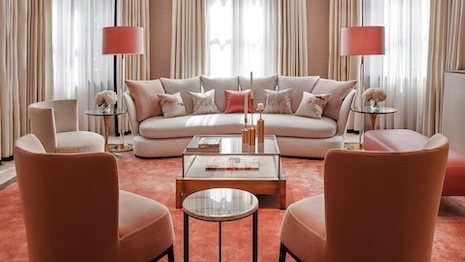
 Sophie Coulon
Sophie Coulon Le Chocolat Maxime Frédéric at Louis Vuitton, Singapore. Image: ©ARR, Louis Vuitton
Le Chocolat Maxime Frédéric at Louis Vuitton, Singapore. Image: ©ARR, Louis Vuitton Loewe's Lunar New Year Capsule Collection for 2024. Image: Loewe
Loewe's Lunar New Year Capsule Collection for 2024. Image: Loewe Louis Vuitton store in Zhang Garden. Image copyright Chaoyi Buer
Louis Vuitton store in Zhang Garden. Image copyright Chaoyi Buer Louis Vuitton store in Zhang Garden. Image copyright Chaoyi Buer
Louis Vuitton store in Zhang Garden. Image copyright Chaoyi Buer